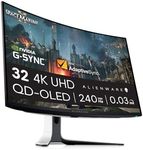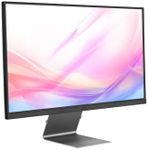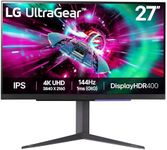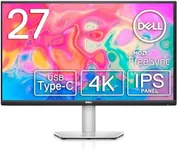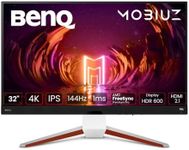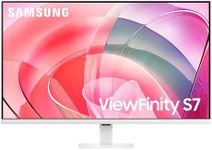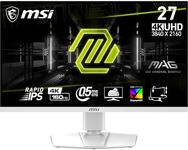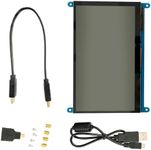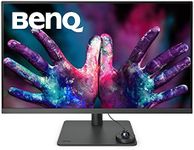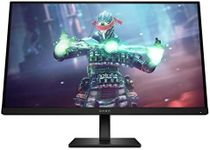Buying Guide for the Best 4K Gaming Monitors
Choosing the right 4K gaming monitor can significantly enhance your gaming experience. With the right monitor, you can enjoy stunning visuals, smooth gameplay, and immersive experiences. To make the best choice, it's important to understand the key specifications and how they align with your gaming needs.ResolutionResolution refers to the number of pixels on the screen, and a 4K monitor has a resolution of 3840 x 2160 pixels. This spec is crucial because higher resolution means more detailed and sharper images. For gaming, 4K resolution provides an incredibly immersive experience with lifelike visuals. If you play games with rich graphics and want the best visual quality, a 4K monitor is ideal.
Refresh RateRefresh rate is the number of times the screen updates per second, measured in Hertz (Hz). This spec is important for smooth gameplay. Common refresh rates for gaming monitors are 60Hz, 120Hz, 144Hz, and even 240Hz. For casual gaming, 60Hz might be sufficient, but for competitive gaming, a higher refresh rate like 144Hz or above is recommended to reduce motion blur and improve responsiveness.
Response TimeResponse time is the time it takes for a pixel to change from one color to another, measured in milliseconds (ms). Lower response times are better for gaming as they reduce ghosting and motion blur. Typical response times range from 1ms to 5ms. If you play fast-paced games, look for a monitor with a response time of 1ms to ensure smooth and clear visuals during rapid movements.
Panel TypePanel type affects the monitor's color accuracy, viewing angles, and response times. The main types are IPS (In-Plane Switching), TN (Twisted Nematic), and VA (Vertical Alignment). IPS panels offer the best color accuracy and viewing angles, making them great for visually rich games. TN panels have faster response times but poorer color accuracy and viewing angles. VA panels offer a balance between the two. Choose IPS for the best visuals, TN for competitive gaming, and VA for a mix of both.
Adaptive Sync TechnologyAdaptive Sync technologies like NVIDIA G-Sync and AMD FreeSync help eliminate screen tearing and stuttering by synchronizing the monitor's refresh rate with the graphics card's output. This spec is important for a smoother gaming experience. If you have an NVIDIA graphics card, look for a monitor with G-Sync. If you have an AMD graphics card, look for FreeSync. This ensures compatibility and optimal performance.
ConnectivityConnectivity options determine how you can connect your monitor to your gaming setup. Common ports include HDMI, DisplayPort, and USB-C. HDMI is widely used and supports 4K resolution, but DisplayPort is preferred for higher refresh rates and better performance. USB-C can be useful for connecting other devices. Ensure your monitor has the necessary ports to match your gaming setup and peripherals.
SizeMonitor size affects your field of view and immersion. Common sizes for 4K gaming monitors range from 27 inches to 32 inches or larger. Larger monitors provide a more immersive experience but require more desk space. Consider your gaming space and how close you sit to the screen. A 27-inch monitor is a good balance for most gamers, while larger sizes are great for deeper immersion.
HDR (High Dynamic Range)HDR enhances the monitor's contrast and color range, providing more realistic and vibrant visuals. This spec is important for games that support HDR, as it can significantly improve the visual experience. Look for monitors with HDR10 or higher for the best results. If you play games with stunning graphics and want the best visual quality, HDR is a valuable feature.
